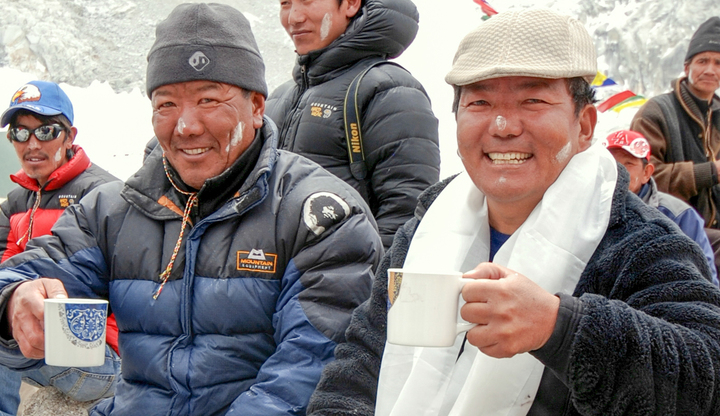Xtreme Archive - Unsung Heroes
Its 29 March 2007, and we are in awe of a mobile phone with built in sat-nav but were wondering at £599 was it worth it?
Meanwhile the person responsible for the theft of Spongebob the monkey from Chessington theme park was jailed (don't worry Spongebob now lives a happy life with his monkey friends at Battersea Park Zoo) and we were all talking about David Beckhams ever changing hair styles.
On this day, Xtreme Everest were paying tribute to the unsung heroes of Everest; the Sherpa community who without them we would never been able to conduct our research.
The Unsung Heroes
originally published on XE2 on 29 March 2007
It seems fitting that while we are based in Namche Bazaar, the Sherpa capital, we should reflect on the people of the Kumbu Valley who help us on our expedition. While they are all Nepali, it is the Sherpa tribe who attract the most international attention because of their outstanding ability to cope with physical work at high altitude and their strength.
Life is simple for the majority of the people, who maintain strong traditions within their cultures. 75% of arable land is cultivated by potatoes, the rest by barley, rye and millet. Tourism continues to grow and is a major source of income for Nepal. The majority of tourist companies are owned by Sherpas or Nepali Hindus and it is very difficult for other tribes to break into the business fields.
Portering is a fact of life across Nepal and not just in trekking. This is due the lack of roads and the remoteness of villages. Within the Kumbu, the majority of portering is done by a mix of tribes such as the Tamang. Sherpas tend to stick to trade and tourism. For economic reasons portering is often the only paid work available. What is remarkable about these porters is their ability to carry staggering loads well in excess of their own body weight. Slight in build, the porters usually carry their loads in a basket - doko - and take the strain with a strap 'namlo' across their forehead. With the strength of a weightlifter and the fitness of world class athletes, they have surprisingly few neck problems despite the enormous loads. There is a concern about exploitation of porters by trekking companies. Earning appalling wages, the porters are often inadequately prepared for the weather extremes that can occur in the mountains.
The Sherpa tribe originally came from North East Tibet and migrated over hundreds of years over the Nangpa La. A major migration occurred in the 1960's after the Chinese invasion of Tibet. As Buddhists, they view life as a series of rebirths. Despite increasing westernisation, they still maintain much tradition and respect for each other and for all forms of life. They are the high-altitude porters for expeditions and take up to 90% of the work in the expedition. They stand out not only for how many times they have stood as climbers on Everest, or other, sometimes more difficult peaks, but for their loyalty, camaraderie and raw courage in undertaking such a hazardous profession. One of the most famous Sherpas is Tenzing Norgay, who with Sir Edmund Hillary was the first to stand atop Everest on 29th May 1953.
Share this :





